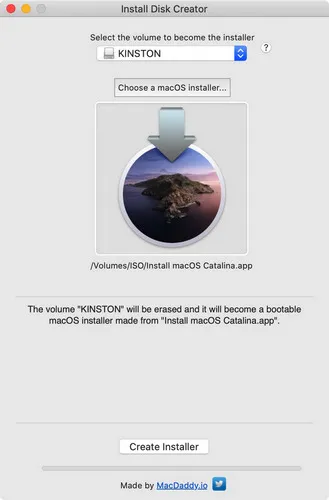Create a Windows Install Disc or Bootable USB Drive. The Windows USB/DVD download tool is a free utility from Microsoft that will allow you to burn the Windows 7 download to disc or create a bootable USB drive. At this point, you have now replaced your misplaced Windows install disc with either another disc or a bootable Windows 7 USB drive! Get the Install Disk Creator. Once you get the Install Disk Creator, just open it, and you will see the window as shown in the below image. Here you need to select the Installer file that we already downloaded. After choosing the Installer just click on Create Installer and it will do the task for you. To create installation media, go to the software download website, where you'll find step-by-step instructions. On that website, you can select a version of Windows and create your own installation media using either a USB flash drive or a DVD. To go directly to one of the versions, select one of these links: Windows 7.
I see a few posts online with people using Install Disk Creator to make bootable install USB keys for re installing OSX, complaining that the key they made doesnt work!
...but I see very few posts offering this very simple piece of advice to people who find the USB they made isnt working.
the program itself is VERY simple to use, you simply select the USB key you want to use (must be 8GB or bigger) and then point the program to the installer .app you want it to use, then just click 'create'
simple enough, but if the installer .app you point it to isn't in the applications folder often the USB key you make wont work as it should.

I tried making an installer key with the .app on a network drive and on the desktop, and on both occasions it wouldn't work when I tried to boot from it.
When I used Install Disk Creator to create a bootable USB key installer, and asked it to access an OSX .app installer I was storing in my applications folder - bingo! works!
hope this helps....
Posted on Jan 11, 2019 6:42 AM
The idea behind a macOS Clean Install
When you install a new major version of OS X, or after some time has passed, it is a good idea to do a clean install (that is, to erase the disk you are installing OS X onto as part of the installation process).
That will make your Mac run blazingly fast for a few months or more, and many people report that it fixes longstanding problems they’ve had too.
It used to be common practice to occasionally run a clean install, and then manually migrate all the files and settings over in order to get a completely fresh start. However, it has been shown in recent times that in the vast majority of cases if you simply run a clean install, then duplicate your old home folder to your new disk, you will get all of the same advantages as a clean install followed by manual migration, with a small fraction of the effort.
Mac Clean Install Procedure
Here is the clean install procedure which can be performed at least every time a new version of macOS is released:
- Download the macOS installer from the App Store. You can download macOS Big Sur by clicking here.
- Backup all the data to an external disk with a clone. Two options are to use Duplicate (a free utility which can copy and paste an entire bootable volume), or Mac Backup Guru (a paid, fully featured backup utility with unique incremental backups capability) for that.
- Create a bootable USB Installer with Install Disk Creator and boot from it. Erase the startup disk and install macOS onto it. Boot up from this newly created startup disk.
- Note: The Finder’s built-in “Copy” and “Paste” will not work for the following.
Go to the backup disk and use Duplicate (free) or Mac Backup Guru to right-click and select Copy on the home folder (eg: External Backup/Users/Bob) and then Paste on the Macintosh HD/Users folder on the startup disk. This migrates all of your personal data and settings to your new home folder.
Then migrate the applications by selecting Copy on the External Backup/Applications folder on the backup disk then Paste on the startup disk (eg: Macintosh HD). This will copy all of the applications which are present on the backup disk but not present on the startup disk to your new Applications folder, and automatically skip any applications which are already on the startup disk.
Install Disk Creator Big Sur

Install Disk Creator Windows
At this point, after a reboot and some minor adjustments (the Dock may not have your previous configuration for example, if you did this while logged into the same user account as you just updated), your new OS should be indistinguishable from your previous one, while being faster and smaller due to reduced clutter.
